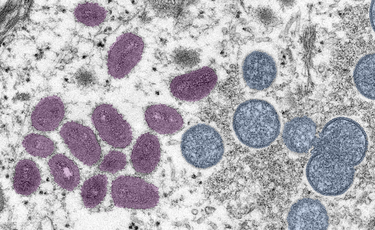NYS health commissioner: Monkeypox risk to public is ‘low’
A rare virus usually seen in Africa, monkeypox has recently been identified in Europe and North America.
As of May 20, there have been a total of 38 confirmed cases reported worldwide, 37 of which have no history of travel to endemic countries, according to a report from the European Centre for Disease Prevention and Control.
“This is the first time that chains of transmission are reported in Europe without known epidemiological links to West or Central Africa,” the report says. “These are also the first cases worldwide reported among MSM,” it says referring to men who have sex with men.
The World Health Organization notes that the United States had the first monkeypox outbreak outside of Africa in 2003; it was linked to contact with infected pet prairie dogs. “These pets had been housed with Gambian pouched rats and dormice that had been imported into the country from Ghana,” the WHO reports. “This outbreak led to over 70 cases of monkeypox in the U.S.”
On May 20, the state’s health department, working with its New York City counterpart, announced the investigation of two suspected cases of monkeypox. Preliminary testing ruled out one of the New York City cases; the other was positive for orthopox virus so the patient was isolated, waiting for final results.
The department alerted New York health-care providers so they have information regarding reporting and case testing, which can be performed at the state’s Wadsworth laboratory, should any of their patients have symptoms consistent with monkeypox.
“The current risk to the public is low,” said Health Commissioner Mary Bassett in a release from the department. Monkeypox is not related to COVID-19.
Health officials in Massachusetts confirmed their first case of monkeypox on May 18, the department said. That case was of someone who returned to the United States from Canada, according to the CDC. Two cases have been confirmed in Canada, with an additional 17 suspected cases identified.
New York State’s health department describes monkeypox as “a rare viral illness that does not usually cause serious illness, but can result in hospitalization or death. It typically begins with a flu-like illness and swelling of the lymph nodes and progresses to a rash on the face and body. Most infections last two to four weeks.”
Monkeypox can be spread from animals to humans and from humans to humans, the department says. People can be exposed to monkeypox through bites or scratches from rodents and other small mammals, preparing wild game, or having contact with an infected animal or possibly animal products.
“The current outbreak appears to have spread through human-to-human contact. Based on previous outbreaks, the virus typically does not spread easily between people,” the health department says. “Transmission can occur through contact with body fluids, monkeypox sores, items that have been contaminated with fluids or sores, or through prolonged exposure to respiratory droplets. Because of this, transmission may also occur through sexual contact.”
Monkeypox was first discovered in 1958 when two outbreaks of a pox-like disease occurred in colonies of monkeys kept for research, hence the name “monkeypox,” says the CDC. The first human case of monkeypox was recorded in 1970 in the Democratic Republic of Congo during a period of intensified effort to eliminate smallpox. Since then, monkeypox has been reported in humans in other central and western African countries.
That first case, the WHO says, was in a 9-year-old boy in a region of the Congo where smallpox had been eliminated in 1968. Since then, most cases have been reported from rural, rainforest regions of the Congo Basin, and human cases have increasingly been reported from across central and west Africa. Since 1970, human cases of monkeypox have been reported in 11 African countries, the WHO says.
The CDC is currently tracking multiple clusters of monkeypox that have been reported in early- to mid-May in several countries that don’t normally report monkeypox, including in Europe and North America.
“It’s not clear how people in those clusters were exposed to monkeypox but cases include people who self-identify as men who have sex with men,” the CDC says.
“With the eradication of smallpox in 1980 and subsequent cessation of smallpox vaccination, monkeypox has emerged as the most important orthopoxvirus for public health,” the WHO says. Vaccines used for smallpox eradication also provided protection against monkeypox and newer vaccines have been developed of which one has been approved for prevention of monkeypox, the WHO says.
Monkeypox is less contagious than smallpox and causes less severe illness, the WHO says, and an antiviral agent developed for the treatment of smallpox has also been licensed for the treatment of monkeypox.



